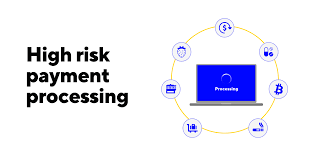In the ever-evolving landscape of e-commerce, staying ahead of the curve is crucial for businesses aiming to thrive. One of the most promising advancements in this domain is the concept of headless commerce, and Shopify is leading the charge with its innovative approach. This article delves into the world of Shopify headless commerce, exploring its benefits, functionalities, and the future it promises for online retail.
What is Headless Commerce?
At its core, Shopify headless commerce decouples the front-end presentation layer of an e-commerce site from the back-end functionality. This means that the front-end, or the “head,” which includes the user interface and experience, operates independently from the back-end systems managing product information, order processing, and other critical functions. This separation allows businesses to use different technologies for the front and back ends, offering unparalleled flexibility and customization.
The Power of Shopify Headless Commerce
Shopify, a leading e-commerce platform, has embraced headless commerce, enabling merchants to leverage its robust back-end capabilities while having the freedom to build custom front-end experiences. This approach provides several significant advantages:
1. Flexibility and Customization
With Shopify headless commerce, businesses are no longer constrained by the limitations of traditional monolithic platforms. They can create unique, tailor-made front-end experiences that align perfectly with their brand identity and customer expectations. Whether it’s integrating with a content management system (CMS), building a progressive web app (PWA), or using a custom front-end framework, the possibilities are endless.
2. Improved Performance
By separating the front-end from the back-end, headless commerce allows for faster loading times and improved site performance. This is because the front-end can be optimized independently, leading to a smoother and more responsive user experience. Faster websites not only enhance customer satisfaction but also contribute to higher search engine rankings, driving more organic traffic.
3. Omnichannel Capabilities
In today’s multi-channel retail environment, providing a consistent and seamless experience across all touchpoints is essential. Shopify headless commerce enables businesses to deliver cohesive experiences across various channels, such as mobile apps, social media, and in-store kiosks. This omnichannel approach ensures that customers can interact with the brand seamlessly, regardless of the platform they choose.
4. Enhanced Scalability
As businesses grow, so do their technological needs. Shopify headless commerce offers the scalability required to accommodate increasing traffic and expanding product catalogs. By leveraging APIs and microservices, businesses can scale specific components of their e-commerce infrastructure without overhauling the entire system, ensuring a cost-effective and efficient growth strategy.
The Future of E-commerce with Shopify Headless Commerce
The adoption of headless commerce is rapidly gaining traction, and it’s poised to become the standard for modern e-commerce solutions. Shopify’s commitment to innovation and flexibility positions it as a key player in this transformative shift. Here are a few trends and future possibilities for Shopify headless commerce:
1. Personalization at Scale
Headless commerce provides the foundation for delivering highly personalized shopping experiences. By integrating with advanced analytics and AI-driven recommendation engines, businesses can tailor content, product suggestions, and marketing messages to individual customers. This level of personalization drives higher engagement, conversion rates, and customer loyalty.
2. Integration with Emerging Technologies
As new technologies like augmented reality (AR), virtual reality (VR), and voice commerce continue to emerge, headless commerce offers the agility needed to integrate these innovations seamlessly. Shopify headless commerce allows businesses to experiment with and adopt new technologies, staying ahead of the competition and meeting evolving customer expectations.
3. Global Expansion
For businesses looking to expand their reach internationally, headless commerce provides the flexibility to create localized experiences for different markets. With the ability to customize the front-end for specific regions, languages, and cultures, businesses can effectively cater to diverse customer bases and drive global growth.
Conclusion
Shopify headless commerce represents the future of e-commerce, offering a powerful combination of flexibility, performance, and scalability. By embracing this innovative approach, businesses can unlock new possibilities and deliver exceptional experiences that set them apart in a competitive landscape. As the e-commerce industry continues to evolve, Shopify headless commerce is poised to be a driving force behind the next generation of online retail.
Unlocking the Future of E-commerce: Exploring Shopify Headless Commerce

Categories:


